Mallow Highway MUSEUM
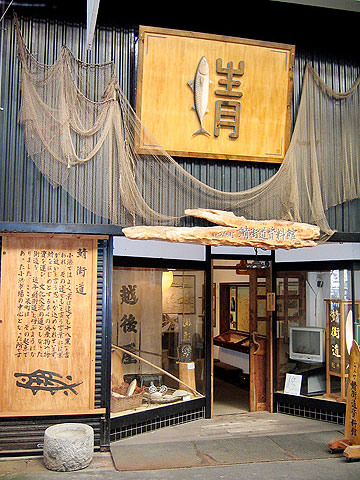
The museum is located in Izumi-cho, the starting point of the Mōmō-Kaido. The history and origin of the Mōmō-Kaido is introduced using photographs and panels.

The museum is located in Izumi-cho, the starting point of the Mōmō-Kaido. The history and origin of the Mōmō-Kaido is introduced using photographs and panels.

The town house built in the middle of the Meiji era is open to the public. There is a material display corner in the two-story wooden building, where you can learn about the history and culture of Obama. There is also a tourist brochure.
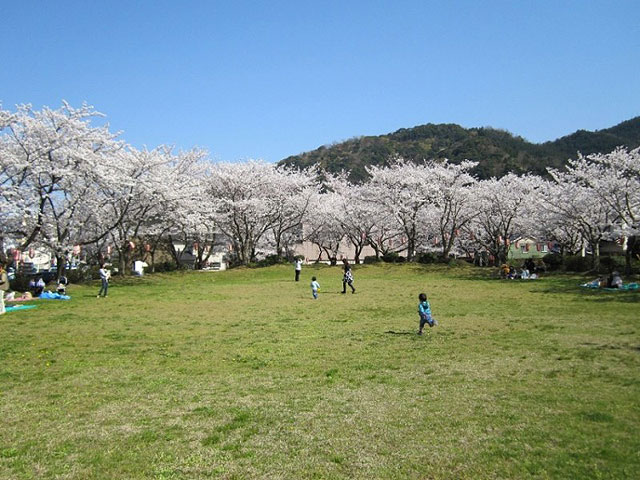
Close to Obama Station, it is a quiet park facing Obama Bay; a cherry blossom spot where the Yoshino cherry blossom blooms in a circle; and a good view from the observation deck, where you can see Obama City and Wakasa Bay along with the cherry blossoms.
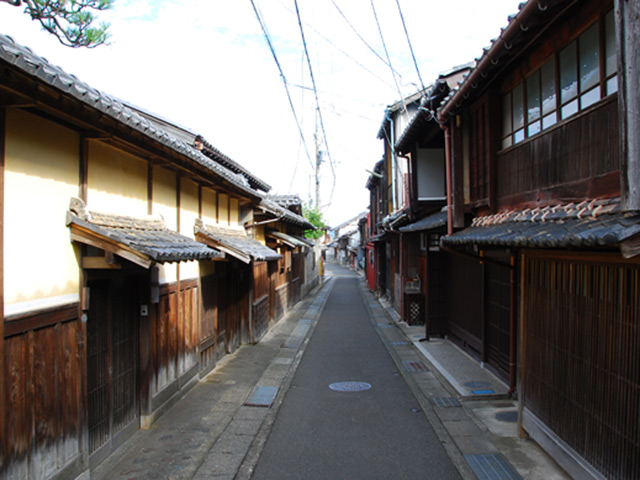
An old town line that is said to have been named because the length of the town is 3 (about 250m). It was once bustling as a teahouse street, and still has a line of houses of the Ewagaragoshi. On Saturdays, Sundays, and holidays, you can visit the restaurant Hoshima-ro built in the Meiji period.
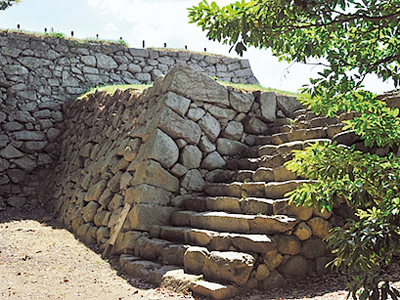
In the 6th year of Gyeongsang (1601), Kyoukoku Takadsugu (Kyōkoku Takatsugu) embarked on the construction of the castle, and was completed by the Obama clan's ancestor, Sakai Tadakatsu (Sakai Takatsu) in the year of Kanei 13 (1636). Later, the castle became the residence of the Obama clan, but only the stone bases of the Honmaru and the Tenjōkaku remain today due to a fire in 1871 (Meiji 4). Obama Shrine stands at the Honmaru site.
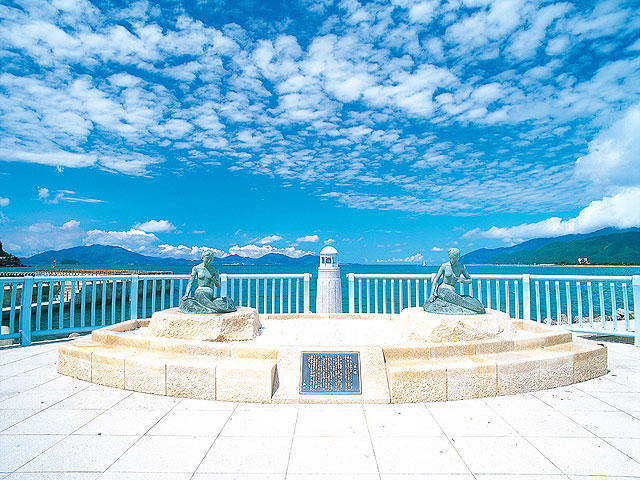
Obama remains the legend of Yaohikuni, who says he got eternal life by eating mermaid meat. In connection with that legend, two mermaid statues with prayers for long life stand on the terrace of Obama Bay. It is also known as a spot where beautiful sunsets can be seen.
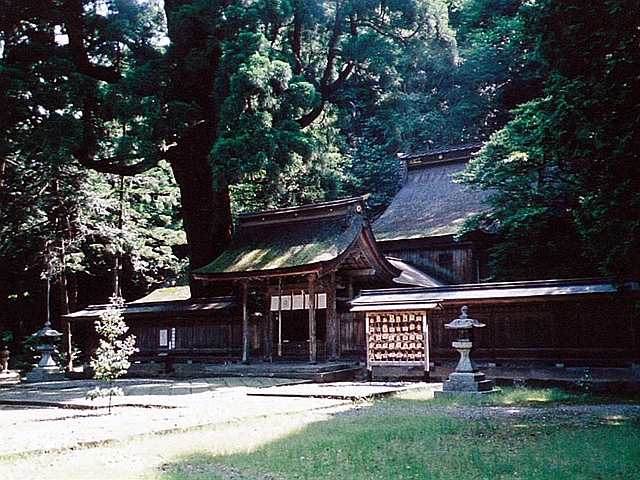
Wakasahiko Shrine in the upper shrine and Wakasahime Shrine in the lower shrine are combined to form the oldest shrine in Wakasa, which is also called the Wakasa Ichinomiya. Originally placed in the same place, it was later divided into a shōsha and a shōsha. The Wakasahiko Shrine in the first year of Reigame (715) has a giant couple cedar with two cedar trees united at the base. There is also a giant tree called a millennial cedar at Wakasahime Shrine in Fengkon 5 (721). Both are considered to be Sosanjou, the pioneer god of the ancient Wakasa country.
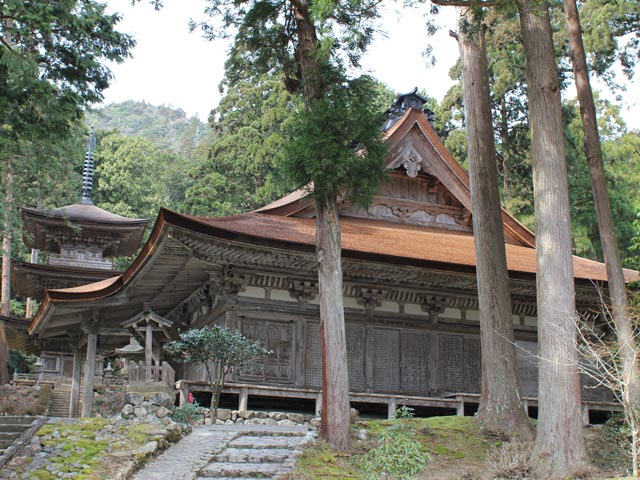
Although Soken is said to be the first year of Datong (806), the current main hall (Yakushido), which was designated as a national treasure, was rebuilt in the second year of Shōjō (1258). The characteristics of the Kamakura-era esoteric architecture are expressed in the eaves that are deeply out. A 22m high triple tower, also a national treasure, stands in a cedar grove next to the main hall. The four statues made in the late Heian period, the main statue of Yakushi Nyorai, the statue of King Fushisan, the statue of the King of Fushan, the statue of the General of Shenzhen, and the statue of the King of Fudō are designated as important cultural treasures of the country, and are overwhelmed by their power.
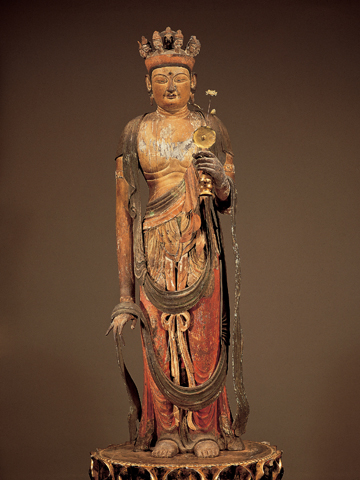
It is said that the beginning of Reigame 2nd year (716) was that Gyoki built a temple by the imperial emperor (to the place of the former Emperor). The main statue of the eleven-faced Guanyin Statue (Important Cultural Property) is said to have been carved by Gyoki as the life body of the former Emperor Shōzō, and is a beautiful Buddha statue with a feminine expression that remains in color. It is said that it is built to be life-size of the Emperor. The extant main hall was rebuilt in Bunan 4 (1447) by Abe (Ando) Yasuki, based in Oshu Jusanminato (Aomori), and has been designated as an Important Cultural Property.
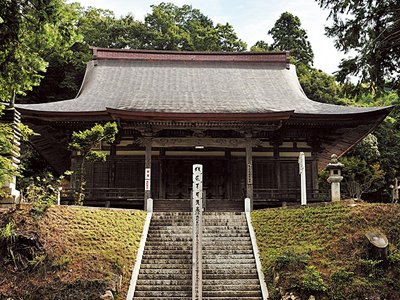
The eye disease was cured by Emperor Xiaoken's royal service. There are the main statue of the wooden Yakushi Nyorai statue, as well as the wooden statue of the moonlight bodhisattva, and the wooden statue of the eleven-sided Kannon bodhisattva. All of them have been designated as important cultural treasures of the country, but among them, the Nikkō Juichen Guanyin Bodhisattva statue is considered to have been pre-established in Japan and is of high value as a historical resource. It is said that Tada-ji was also described as a proponent medicine, and that there was a Brahma bell that was blessed with money, and that Toyotomi Hideyoshi also had a bell and that Tsukijo was granted in Nagahama.